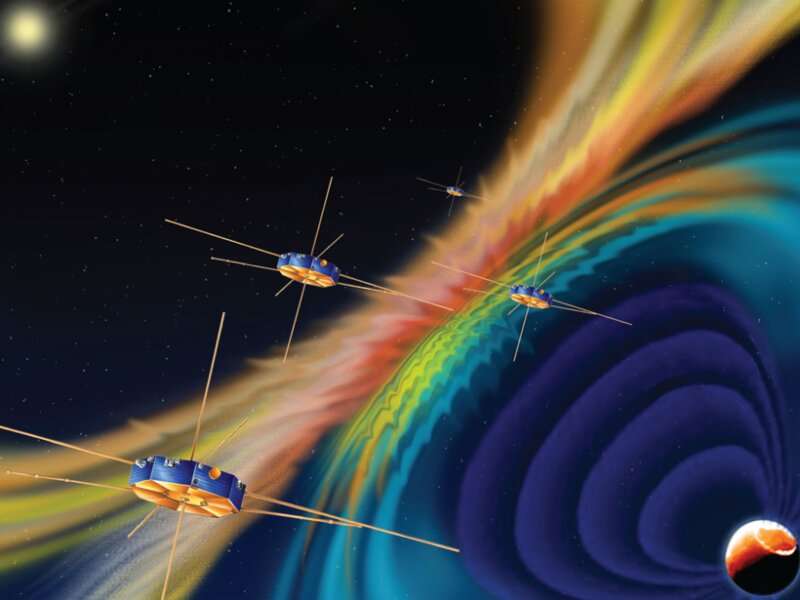Spacecraft reveal new details of magnetic reconnection

The space environment around Earth is characterized by interactions between Earth's magnetic field and nearby plasma. A key physical process in these interactions is magnetic reconnection, in which two adjacent field lines break and each half subsequently joins half of the other broken line to form new field lines. Reconnection releases potential energy stored in the field lines, transferring it to the surrounding plasma in the form of particle acceleration.
NASA's Magnetospheric Multiscale (MMS) mission, which launched in 2015, studies magnetic reconnection using four small spacecraft that orbit in formation. Turner et al. describe MMS observations of a reconnection event that occurred on 11 July 2017. At the time of the reconnection, MMS was passing through the electron diffusion region (EDR), an area tens of kilometers in size in which reconnection of magnetic field lines occurs.
Prior to the reconnection event, MMS observed no energetic electrons in its vicinity. Then it recorded two bursts of energetic (greater than 50 kiloelectron volts) electrons within five seconds, the latter of which persisted for several minutes. During these bursts, higher-energy electrons arrived in the EDR first, followed by those with lower energies. The authors interpret this energy dispersion as evidence of electrons from a far-off reservoir flowing onto the newly formed field lines.
They also report that, strikingly, all four spacecraft did not observe identical particle distributions despite being very close together in space in comparison with the characteristic scale of motion of electrons with energies of 50 or more kiloelectron volts. This evidence of chaotic particle motion occurred despite the overall magnetic field in the region around MMS remaining stable for several seconds. Such particle distributions are typical of nonlinear particle acceleration.
The authors conclude that small-scale motions of electrons in the vicinity of a magnetic reconnection event can thus shed light on the magnetic topology in a region much larger than the area of observation and that magnetic reconnection may directly accelerate electrons to relativistic energies.
More information: Drew L. Turner et al. Characteristics of Energetic Electrons Near Active Magnetotail Reconnection Sites: Tracers of a Complex Magnetic Topology and Evidence of Localized Acceleration, Geophysical Research Letters (2020). DOI: 10.1029/2020GL090089
Journal information: Geophysical Research Letters
Provided by American Geophysical Union
This story is republished courtesy of Eos, hosted by the American Geophysical Union. Read the original story here.




















